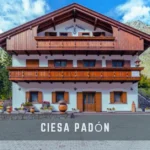Introduction to Stichting Bouwresearch and their mission
The wind has long been an essential component of Dutch culture, giving rise to the iconic silhouette of windmills dotting the landscape. However, as we advance into a new era focused on sustainability and renewable energy, how do these traditional structures fit into our future? Enter Stichting Bouwresearch. This innovative organization is not just looking back at the history of windmills; they are reimagining their design and function for modern needs. With a mission anchored in research and development, Stichting Bouwresearch is leading the charge toward a more sustainable world—one that harnesses the power of wind in revolutionary ways. Let’s explore their groundbreaking work and its impact on both our heritage and future energy solutions!
The history of windmills and their role in Dutch culture
Windmills have long been an iconic symbol of the Netherlands. Their history dates back to the 12th century, when they were initially used for grinding grain and draining wetlands. This ingenious technology transformed the Dutch landscape.
As windmills spread across the country, they became integral to daily life. Farmers relied on them for a variety of tasks, from sawing timber to crushing seeds. Each region developed its unique style of windmill, enhancing local culture and identity.
The picturesque sight of these towering structures against vibrant tulip fields captures tourists’ hearts even today. Windmills represent not just engineering marvels but also resilience in harnessing nature’s power.
In Dutch folklore and art, windmills are celebrated as symbols of harmony between mankind and nature. They stand testament to centuries of innovation while continuing to inspire future generations with their romantic charm.
The challenges faced by traditional windmills
Traditional windmills have long been symbols of Dutch heritage. However, they face numerous challenges in today’s fast-paced world.
One major issue is maintenance. The age of many windmills means they require constant upkeep to remain operational. This can be both time-consuming and expensive.
Weather conditions also pose a threat. Strong winds or storms can damage the delicate machinery and structure, leading to costly repairs.
Moreover, traditional designs are often less efficient than modern alternatives. They struggle to generate sufficient energy for contemporary demands.
There’s the matter of environmental impact. As urban areas expand, noise and visual pollution from windmills become concerns for local communities.
These challenges highlight a pressing need for innovation in design and functionality to ensure that these iconic structures continue to thrive amid changing circumstances.
How Stichting Bouwresearch is revolutionizing the design and function of windmills
Stichting Bouwresearch is at the forefront of windmill innovation. Their approach melds traditional craftsmanship with cutting-edge technology. This fusion creates structures that are not only visually striking but also highly efficient.
The organization focuses on materials that enhance durability yet minimize environmental impact. By utilizing advanced composites, they reduce weight while increasing strength, allowing for taller and more effective windmills.
Furthermore, Stichting Bouwresearch integrates smart sensors into their designs. These sensors monitor performance in real-time, adjusting blade angles to optimize energy capture based on prevailing winds.
In collaboration with local communities, they ensure these new designs resonate culturally while meeting modern energy needs. This inclusive strategy fosters acceptance and support for sustainable practices across the Netherlands.
Each project becomes a testament to how tradition can evolve without losing its essence—creating a harmonious balance between heritage and future-focused innovation.
Case studies of successful projects by Stichting Bouwresearch
Stichting Bouwresearch has embarked on several innovative projects that highlight their commitment to modernizing windmill technology. One notable case is the refurbishment of a historic windmill in Zaanse Schans. The team integrated advanced materials and energy-efficient systems while preserving its cultural significance.
Another remarkable project involved the development of a hybrid wind-solar installation in Friesland. This initiative combined traditional wind power with solar panels, showcasing how diverse renewable sources can work together seamlessly.
The research conducted by Stichting Bouwresearch also extends to optimizing maintenance processes for these structures. By using data analytics, they’ve significantly reduced downtime and improved efficiency across various locations.
These examples illustrate not just technical innovation but also a deep respect for Dutch heritage. Each project serves as an inspiring blueprint for future endeavors in sustainable energy solutions within culturally rich contexts.
The impact of Stichting Bouwresearch on the future of sustainable energy
Stichting Bouwresearch is paving the way for a new era in sustainable energy. Their innovative approach to windmill design addresses both efficiency and environmental impact.
By integrating cutting-edge technology, these modern windmills produce more energy while minimizing land use. This means they can be placed closer to urban areas, reducing transmission losses and making clean energy more accessible.
The organization’s commitment extends beyond just engineering advancements. They actively engage with local communities to promote awareness of renewable resources. Education initiatives help foster a culture of sustainability among future generations.
Through partnerships with industry leaders, Stichting Bouwresearch is also influencing policy changes that support renewable energy development in the Netherlands. Their research informs decision-makers about best practices and emerging trends.
Their vision transforms not only how we harness wind power but also our broader relationship with nature and energy consumption.
Conclusion: The importance of innovation
Innovation is the driving force behind progress, and Stichting Bouwresearch embodies this philosophy. By reimagining traditional windmills, they are not only preserving a vital part of Dutch heritage but also enhancing their functionality for modern energy needs. The challenges faced by conventional windmill designs demand creative solutions, and Stichting Bouwresearch answers that call with cutting-edge technology.
As sustainable energy gains prominence globally, the work done by Stichting Bouwresearch sets an example for others in the field. Their commitment to research and development paves the way for future advancements that will help meet our growing energy demands while respecting environmental concerns.
Embracing innovation is crucial as we move toward a more sustainable future. Organizations like Stichting Bouwresearch remind us that with creativity and dedication, we can transform traditional practices into powerful tools for change. This spirit of innovation holds endless possibilities for generations to come.
FAQs
What is Stichting Bouwresearch?
Stichting Bouwresearch is a pioneering foundation in the Netherlands focused on advancing windmill technology and sustainable energy practices.
How does Stichting Bouwresearch impact windmill technology?
The foundation drives innovation in windmill design and efficiency, contributing to more sustainable and effective energy solutions.
Where is Stichting Bouwresearch based?
Stichting Bouwresearch is located in the Netherlands, a hub for windmill innovation and sustainable energy.
Why is Stichting Bouwresearch important for sustainability?
It plays a crucial role in developing and promoting windmill technologies that support a greener and more sustainable future.
Can I learn more about Stichting Bouwresearch’s projects?
Yes, Stichting Bouwresearch regularly updates its projects and advancements on its website and through various publications.







